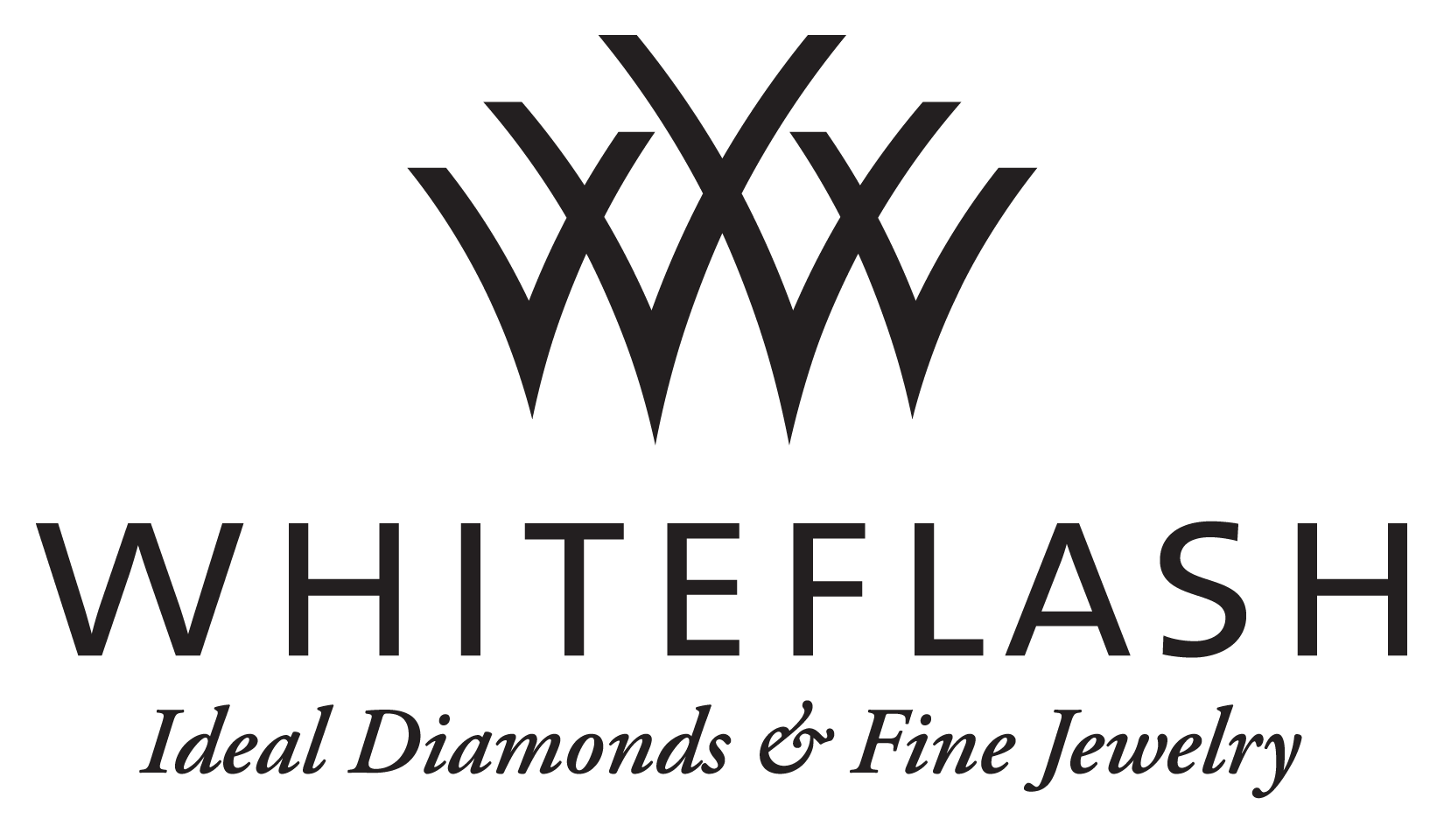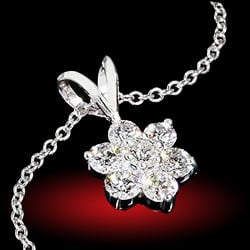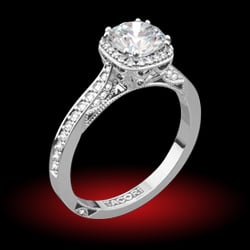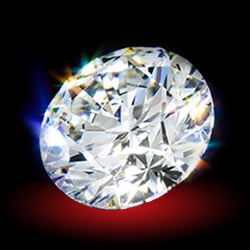Often on PS you'll have people stating the set guidelines of depth up to 62.3 (including myself). If a particular diamond has a depth of 62.4 or 5 but is otherwise perfect, the advice generally would be "shame about the depth and loss of spread because it's going to face up slightly smaller than another ideal cut diamond with depth <62".
I've discredited multiple diamonds myself that looked great because I believed they were too deep. However, I've come across a few diamonds to challenge this.
Look at these two diamonds:
(1.5ct, 62.6% depth, 7.315mm spread)
https://www.jamesallen.com/loose-di...f-color-si1-clarity-excellent-cut-sku-4616778
(1.5 ct, 61.8% depth, 7.315mm spread)
https://www.jamesallen.com/loose-di...e-color-si2-clarity-excellent-cut-sku-4046910
They are the same carat weight, the same mm diameter, but one has a depth of 62.6 and the other 61.8.
Although increased depth generally means that spread is reduced, this is definitely not the rule.
Another few potentially more useful example is typical 60:60 diamond with good numbers:
Supposedly great spread:
(1.00carat, 60.8% depth, 6.445mm)
https://www.jamesallen.com/loose-di...j-color-si2-clarity-excellent-cut-sku-3646773
(1.00carat, 60.9% depth, 6.43mm)
https://www.jamesallen.com/loose-di...j-color-si2-clarity-excellent-cut-sku-4259635
(1.00, 61.3%, 6.42mm)
https://enchanteddiamonds.com/diamo...0-Carat-E-Color-VS1-Clarity-Diamond-6040967Z3
Compare it to
(1.00, 62.7%, 6.415mm)
https://www.jamesallen.com/loose-di...color-vs2-clarity-true-hearts-cut-sku-2536114
(1.00carat, 62.1% depth, 6.455mm)
https://enchanteddiamonds.com/v/196140Z78
(1.00carat, 61.8% depth, 6.435mm)
https://www.hpdiamonds.com/en-us/diamonddetail/HPD8709
(1.007carat, 61.9% depth, 6.43mm)
https://www.whiteflash.com/loose-diamonds/round-cut-loose-diamond-3929342.htm
These are just few examples of how depth =/= spread, and the deeper diamonds really hold their own against the shallower depths. I couldn't believe the spread the 62.7% depth diamond had!
How can this be? Well it depends where the carat is going. The girdle being almost equivalent to a cylinder will take the most carat per % increase depth. This is generally followed by the crown taking up the second most carat per crown height % increase, then the pavilion taking the least for every extra pavilion height % you add. Generally, a small table will add little carat relative to the depth %, so although it may make the depth look bad, the spread isn’t affected much.
This means diamonds with larger tables may not have the amazing spread as their depth % may seem to indicate compared more traditional H&A diamonds with ~62% depth
So how to accurately measure spread? We should technically measure spread relative to carat, not depth % (although more of a nuisance to calculate):
Average Diameter(mm) / CubeRoot(Carat) = Average Diameter PER carat
We apply the cuberoot as carat is a measure of mass (3D), while diameter is just a length (1D).
If we say a typical ideal diamond would have these stats (on a GIA cert)
Table: 57
Crown: 34.5
Pavilion 40.7
LGF: 77
Star%: 50
Depth: 61.5%
Girdle: 3.5%
Would have 6.42mm spread.
We can then roughly say then any diamond around 6.42mm spread per carat has average spread (relative to the diamond above, or any diamond well below 6.40mm spread per carat could have better spread).
Example (comparing different carat sizes):
(1.77 carat, 61.8%, 7.82mm spread) = 7.82 / 1.77^(1/3) = 6.465mm per carat (excellent spread).
https://www.jamesallen.com/loose-di...color-si1-clarity-true-hearts-cut-sku-3187056
vs
(1.72 carat, 61.9%, 7.645mm) = 6.38mm per carat (not as good).
https://www.jamesallen.com/loose-di...color-si1-clarity-true-hearts-cut-sku-3187063
My take home message really is when the table is small, be a bit more forgiving of the depth, and you might not be missing out on any spread when the depth goes beyond the 62.3% magic number if the table is 54-55% vs 57-58%. I don’t intend this to influence your daily searches, but I certainly found it interesting.
I first thought of the idea when I saw @Rhino AVR post (https://www.goodoldgold.com/the-august-vintage-european-cut) which includes “Key thing I'd like to point out here. The August Vintage European Cut, while having a 64.4% depth has an average diameter of 8.15mm. The GIA XXX's in the above query have 62.x% depths with an average diameter 8.10mm. How can that be your ask? You can call that a small miracle.” I thought the same must apply to a lesser extent to MRBs and I found it does!
How can that be your ask? You can call that a small miracle.” I thought the same must apply to a lesser extent to MRBs and I found it does!
I've discredited multiple diamonds myself that looked great because I believed they were too deep. However, I've come across a few diamonds to challenge this.
Look at these two diamonds:
(1.5ct, 62.6% depth, 7.315mm spread)
https://www.jamesallen.com/loose-di...f-color-si1-clarity-excellent-cut-sku-4616778
(1.5 ct, 61.8% depth, 7.315mm spread)
https://www.jamesallen.com/loose-di...e-color-si2-clarity-excellent-cut-sku-4046910
They are the same carat weight, the same mm diameter, but one has a depth of 62.6 and the other 61.8.
Although increased depth generally means that spread is reduced, this is definitely not the rule.
Another few potentially more useful example is typical 60:60 diamond with good numbers:
Supposedly great spread:
(1.00carat, 60.8% depth, 6.445mm)
https://www.jamesallen.com/loose-di...j-color-si2-clarity-excellent-cut-sku-3646773
(1.00carat, 60.9% depth, 6.43mm)
https://www.jamesallen.com/loose-di...j-color-si2-clarity-excellent-cut-sku-4259635
(1.00, 61.3%, 6.42mm)
https://enchanteddiamonds.com/diamo...0-Carat-E-Color-VS1-Clarity-Diamond-6040967Z3
Compare it to
(1.00, 62.7%, 6.415mm)
https://www.jamesallen.com/loose-di...color-vs2-clarity-true-hearts-cut-sku-2536114
(1.00carat, 62.1% depth, 6.455mm)
https://enchanteddiamonds.com/v/196140Z78
(1.00carat, 61.8% depth, 6.435mm)
https://www.hpdiamonds.com/en-us/diamonddetail/HPD8709
(1.007carat, 61.9% depth, 6.43mm)
https://www.whiteflash.com/loose-diamonds/round-cut-loose-diamond-3929342.htm
These are just few examples of how depth =/= spread, and the deeper diamonds really hold their own against the shallower depths. I couldn't believe the spread the 62.7% depth diamond had!
How can this be? Well it depends where the carat is going. The girdle being almost equivalent to a cylinder will take the most carat per % increase depth. This is generally followed by the crown taking up the second most carat per crown height % increase, then the pavilion taking the least for every extra pavilion height % you add. Generally, a small table will add little carat relative to the depth %, so although it may make the depth look bad, the spread isn’t affected much.
This means diamonds with larger tables may not have the amazing spread as their depth % may seem to indicate compared more traditional H&A diamonds with ~62% depth
So how to accurately measure spread? We should technically measure spread relative to carat, not depth % (although more of a nuisance to calculate):
Average Diameter(mm) / CubeRoot(Carat) = Average Diameter PER carat
We apply the cuberoot as carat is a measure of mass (3D), while diameter is just a length (1D).
If we say a typical ideal diamond would have these stats (on a GIA cert)
Table: 57
Crown: 34.5
Pavilion 40.7
LGF: 77
Star%: 50
Depth: 61.5%
Girdle: 3.5%
Would have 6.42mm spread.
We can then roughly say then any diamond around 6.42mm spread per carat has average spread (relative to the diamond above, or any diamond well below 6.40mm spread per carat could have better spread).
Example (comparing different carat sizes):
(1.77 carat, 61.8%, 7.82mm spread) = 7.82 / 1.77^(1/3) = 6.465mm per carat (excellent spread).
https://www.jamesallen.com/loose-di...color-si1-clarity-true-hearts-cut-sku-3187056
vs
(1.72 carat, 61.9%, 7.645mm) = 6.38mm per carat (not as good).
https://www.jamesallen.com/loose-di...color-si1-clarity-true-hearts-cut-sku-3187063
My take home message really is when the table is small, be a bit more forgiving of the depth, and you might not be missing out on any spread when the depth goes beyond the 62.3% magic number if the table is 54-55% vs 57-58%. I don’t intend this to influence your daily searches, but I certainly found it interesting.
I first thought of the idea when I saw @Rhino AVR post (https://www.goodoldgold.com/the-august-vintage-european-cut) which includes “Key thing I'd like to point out here. The August Vintage European Cut, while having a 64.4% depth has an average diameter of 8.15mm. The GIA XXX's in the above query have 62.x% depths with an average diameter 8.10mm.







300x240.png)